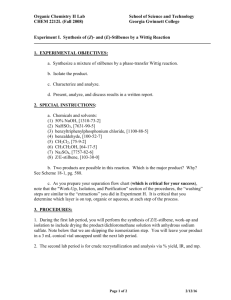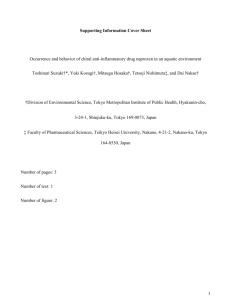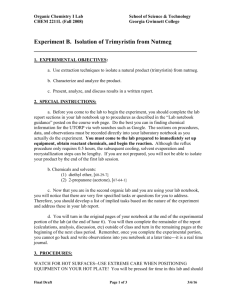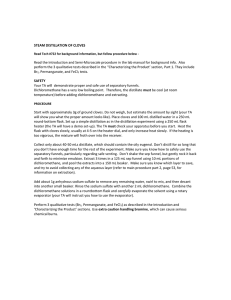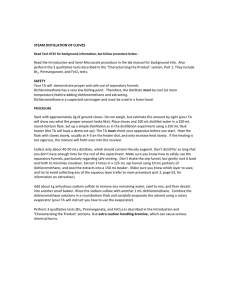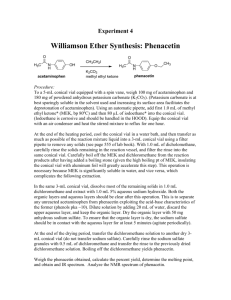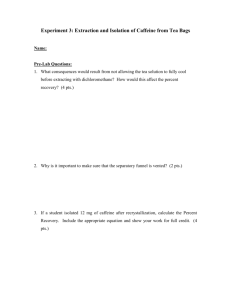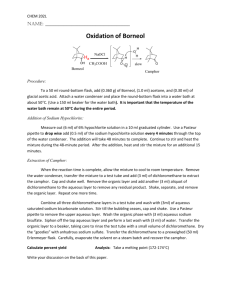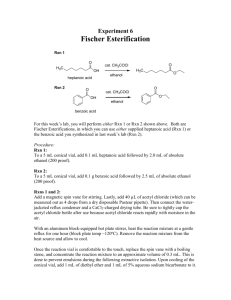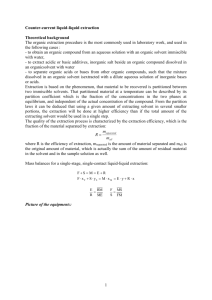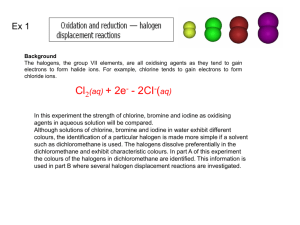Georgia Gwinnett College
advertisement
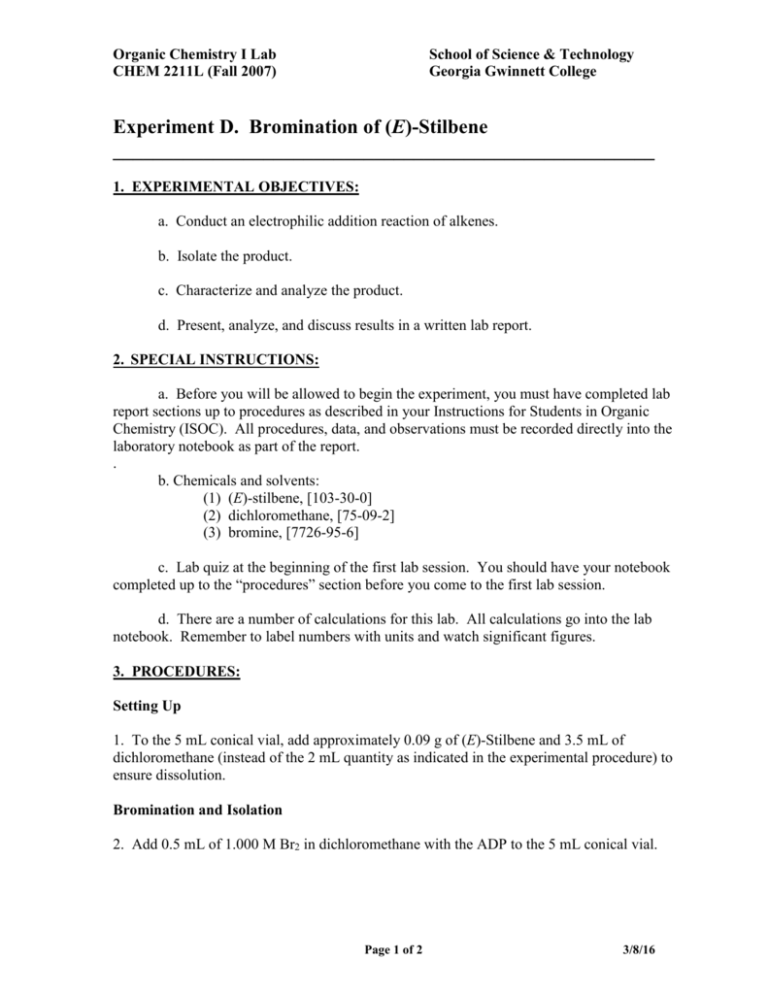
Organic Chemistry I Lab CHEM 2211L (Fall 2007) School of Science & Technology Georgia Gwinnett College Experiment D. Bromination of (E)-Stilbene ______________________________________________________ 1. EXPERIMENTAL OBJECTIVES: a. Conduct an electrophilic addition reaction of alkenes. b. Isolate the product. c. Characterize and analyze the product. d. Present, analyze, and discuss results in a written lab report. 2. SPECIAL INSTRUCTIONS: a. Before you will be allowed to begin the experiment, you must have completed lab report sections up to procedures as described in your Instructions for Students in Organic Chemistry (ISOC). All procedures, data, and observations must be recorded directly into the laboratory notebook as part of the report. . b. Chemicals and solvents: (1) (E)-stilbene, [103-30-0] (2) dichloromethane, [75-09-2] (3) bromine, [7726-95-6] c. Lab quiz at the beginning of the first lab session. You should have your notebook completed up to the “procedures” section before you come to the first lab session. d. There are a number of calculations for this lab. All calculations go into the lab notebook. Remember to label numbers with units and watch significant figures. 3. PROCEDURES: Setting Up 1. To the 5 mL conical vial, add approximately 0.09 g of (E)-Stilbene and 3.5 mL of dichloromethane (instead of the 2 mL quantity as indicated in the experimental procedure) to ensure dissolution. Bromination and Isolation 2. Add 0.5 mL of 1.000 M Br2 in dichloromethane with the ADP to the 5 mL conical vial. Page 1 of 2 3/8/16 Organic Chemistry I Lab CHEM 2211L (Fall 2007) School of Science & Technology Georgia Gwinnett College 3. Securely clamp your vacuum filtration apparatus. Ensure you have good vacuum before beginning the filtration process. Use caution when transferring your product during filtration. Wash the product carefully with sufficient cold dichloromethane while filtering to remove any color from the crystalline material. Retrieve any product which circumvents the filter and is deposited in the filtration flask. 4. The product, as obtained from the reaction, is sufficiently pure and requires no recrystallization. Therefore, omit the recrystallization portion of the experimental procedure. 5. Dry your product under the “fries lamp” for a few minutes, then obtain mass and melting point. Analysis 6. Conduct the following. a. Determine the melting point (start the MelTemp at 180oC). b. Determine percent yield (remember to base your % yield on the limiting reagent). 7. Disposal of chemical and solid waste. Discard pipette tips in receptacles inside the hoods. Clean your glassware in the organic waste hood with dichloromethane before disposal. Page 2 of 2 3/8/16
